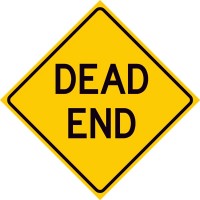
The bloodcurdling screams woke Cristina (name changed to protect the sort-of-innocent) up from her deep slumber.
In a recanting of the tale, she says “These weren’t screams of joy (read: ecstasy) or even the ones you’d get when you fall, but REAL screams – the kind from horror movies except only real.” (Hey, English is her second language. Work with me here.)
Still half-asleep, she sat bolt-upright in her bed thinking: What should she do next? Was she still dreaming?
As the “I’m-being-chased-by-an-axe murderer” shrieks continued, she dialed 911 on her cellphone. Cristina, not the most patient girl, says of the experience “Good Lord, those 911 operators are annoying. They never seem to share my sense of urgency. After explaining to them in excruciating detail what was happening, they transferred me to the police.” I didn’t have the heart to tell her that the 911 operators could pinpoint exactly where she lived and probably felt that she had been drinking… heavily. The Stepford Wives who live in her ritzy housing complex have so much Botox in their faces, they are unable to smile. There’s less-than-zero chance of them contorting their mouths into a scream. But I digress…
By the time she had gotten transferred (read: “six days later”), the yelps of agony had stopped. She was told the police were already en route (the stablemen can rally up those ponies “real quick” in Houston), so she sat Indian-style in her bed unable to go back to sleep – waiting.
About five minutes later, the wailing started again.
Cristina did not know what to do but she knew she could not just sit there so she fished underneath her bed for the closest weapon. In the South, everyone and their brother has a gun. Or in Cristina’s case – a piece of sports equipment.
“The golf club is the only thing I own that could be used as a weapon,” she explains. “It’s Jorgito’s (her nephew’s) and I’ve had it since I moved into that first apartment by the park. It is very heavy and I have no idea what type it is. It looks like an oversized one that you get at mini golf, so I guess it’s called a putter. I keep it under my bed which is no longer great because I used to be able to reach for it easily. But my new bed is so high, I practically have to fall off to get it. (Let’s be nice and not comment on the last sentence.) Anyway, the only thing that kept on running through my head was that if something really bad happened and I did nothing, I would never be able to sleep again. ”
So, what did Cristina do?
Southerners tend to do this thing where they’ll say something really awful about someone (i.e., “he’s dumber than a box of rocks”) and then finish it up with “bless his heart” to make it all better. So, in the spirit of the story, blind-as-a-bat (the girl cannot see an inch in front of her face without her contacts or glasses) and in ripped-in-all-the-wrong-places, polka-dotted, silk pajamas, BLESS HER HEART, Cristina and her flimsy putter stepped out of her apartment to rescue the damsel in distress.
As she rounded the corner with her KILLER WEAPON CHOICE (aka THE putter), Cristina heard someone behind her.
She stopped and slowly turned around to face a VERY LARGE, BEEFY, BURLY guy with a VERY SCARY LOOKING gun (“like the ones in Die Hard”). She nicely summed him up by saying “He looked like he meant business EXCEPT he had a better choice of weapon.” (Newsflash Cristina: You can’t hit a tee-ball on its FLIPPING stand, BLESS YOUR HEART, YOUR KIDNEYS AND YOUR LIVER TOO, so I’m not sure how you think you are going to be a death machine with your dime-store putter.)
Stunned, she turned around and faced yet another Hulk-of-a-man (thankfully, this time it was her neighbor) with an even bigger semi-automatic weapon.
“It’s best if you step inside.” He mumble-shouted. Well, that could be an embellishment. His accent was so thick, she couldn’t really understand him. He probably said “Get inside, you putter-bearing idiot, or I will blast you to smithereens!” (Sorry, I’m not up to date on my Will Smith lingo.)
Like a deer stuck in the headlights, Cristina didn’t move. “N-O-W, MISSY.” The neighbor bellowed as he pulled back on the charging handle to chamber a round. Cristina recalls, “That was an unmistakable sound and very scary, so it was basically all I heard.”
Cristina scurried inside. (God only knows why – a putter always wins out over cop-killing weapons. Hasn’t she seen “24”?)
In what-seemed-like-forever-and-was-probably-a-minute, the screams stopped. Ten minutes later, she heard sirens. Then an ambulance.
What’s the point of this silly tale? (Yes, shockingly enough, there is one.)
Cristina is the marketing director of a very successful, very well-run, B2B catalog that sells to two DYING markets. (We’re talking dusting the seats of the Titanic here, folks.) One of them is automotive dealerships if that tells you anything. And their business is thriving. Yes, you read that correctly. THRIVING – in a terrible, horrible, no good, very bad economy!
Why, you may ask? Easy. They use us to help them.
SERIOUSLY, the reason is that Cristina approaches her market just the way she approached what happened at her chi-chi-la-la apartment complex. She is VERY aggressive and she will use whatever tools she has in her arsenal (even if it’s a flipping putter) to win. She doesn’t always have access to the latest and greatest shiny things, but she takes what she does have and uses it to her advantage. She has a great team that’s all on the same page — and they work really hard to get stuff done.
Many marketers are paralyzed with fear these days. Their lack of action creates exactly what they were afraid of. This is not Cristina’s case. She has decreased her offline prospecting efforts and put money into her more profitable online marketing. She has increased her e-mail frequency (Much to the dismay of a couple of her employees who felt she was overmailing, she has actually increased response and profits by e-mailing MORE!) Put simply, she has cut out the fluff and done more stuff.
Below, you’ll find seven ideas for getting more bang for your marketing buck. And, if you don’t have a gun and can’t get a bang, read it as seven ideas for one-putting every green.
P.S. To this day, Cristina does not know what really happened – only that she got a flyer underneath her door saying there was a home invasion and that someone was attacked. The guy was arrested and there was a statement that all tenants were responsible for their own safety (Nothing like sensitive building owners reminding you that they are not liable if you get butchered on their premises).
7 SURE-FIRE TIPS YOU CAN USE TO IMPROVE YOUR BUSINESS WITHOUT BREAKING THE BANK
1. Read and react.
Online companies are more fluid than offline companies – you have a huge opportunity to continuously improve what you are doing. A good example of this is PPC spending. It blows my mind how many people set a monthly budget for PPC and then spend just to that number. Sure, they may allocate more money at Christmas than they do in July but the reality is that when the money is gone for the month they wait till the next month. For the love of all things holy, PPC is a numbers game! You need to make hay while the sun shines! Figure out the cost per sale that you are willing to accept. If your program is profitable, don’t throw away sales just because you’ve used your entire budget in the first week – re-evaluate and readjust accordingly.
2. Start paying attention to your organics.
When paid search came into play, many marketers got lazy and abandoned all their organic efforts. That’s a shame of epic proportions as for many companies, organic results are their best converters – not to mention that you can’t beat the price (FREE!) The best thing about organics is that you don’t need to build Rome in a day – doing small things over a period of time can often make a difference. Look at your page titles; make sure your URL strings are simple and static; ensure your redirects are set-up properly; use meaningful links (for example, click here is NOT good); check your meta descriptions (aka elevator pitches) to make sure they are aggressive enough to get someone to click; and use H1 heading tags for content titles.
3. Determine whether or not you’re e-mailing enough.
I can already tell you, you’re not.
4. Develop a trigger e-mail program.
Trigger e-mails (aka on-demand or good dog e-mails) are e-mails based on an action. They have better deliverability, open rates, clickthrough rates and conversion. The best trigger e-mails are typically abandoned cart (or lead form) e-mails, but there are dozens of others too – thank you’s (signing up for a free catalog or newsletter), confirmations (for orders or quote requests), abandoned search e-mails, EBOPP’s (e-mails based on past purchases) and more. Triggers needn’t be fancy but they should be personalized based on the user and the good, bad or indifferent things he did on your site.
5. Consider live chat.
In the old days (four years ago), I was not a big fan of chat. Very few people knew how to work it and it was expensive. These days it’s dirt cheap (sometimes even free) and there’s a lot of good information out there on how to best set up your program. Consider using chat on your highest exit pages (or the pages that lead up to them) – search and checkout, for example. You should start first with user-directed support (they click to start the conversation with you.) Then, when you master that go on to instigated chat (you start the conversation with them), which usually performs about 4-5 times better, right out of the gate.
6. Use exit pop-ups and other rat traps.
(Yes, traps.) Just this morning, I got yet another e-mail from a client listing the reasons why they are morally opposed to pop-ups. For some reason, these type of e-mails always strike me as amusing. Just because you don’t like them that automatically means your customers won’t, right? Oh wait, the logic is that EVERYONE in the world blocks them, even though most people don’t even know what they are or what they are called. The fact of the matter is that even if 80% of your users blocked them (which they won’t), they’d still work.
Exit pop-ups are effective because the user MUST interact with them – there’s no choice in the matter. They are also one of the strongest action directives you can use on your site. They’re perfect for reminding people of abandoned carts; executing short surveys; promoting e-mail sign-ups; and more. In the end, if the user sees an exit pop-up, that means they are leaving your site without doing what you wanted them to do. Don’t you owe it to them – and yourself – to give them one last pitch of why you want their business before they walk out the door? (Correct answer: YES!).
7. If you’re not using it, consider getting rid of it.
It blows my mind how many companies have these fancy-schmancy packages (statistical packages, for example) that they do not use. If you’re paying a lot of money for something and are not using it, think twice about whether or not you really need it. I have a client who cut over a million dollars from their budget this year just by substituting packages. For example, they were paying about $200,000 per year for a split-test package that they had only used twice in the year (both times unsuccessfully.) They dumped it and implemented Google Optimizer instead. Is Google Optimizer better than the old package? No, but it works… and in this economy that’s what counts.



 I am staying at the Four Seasons in Beverly Hills.
I am staying at the Four Seasons in Beverly Hills.



